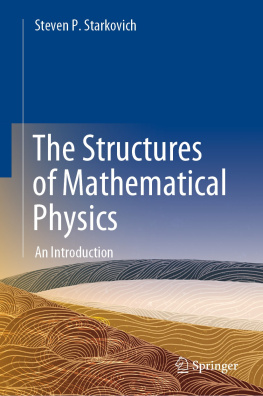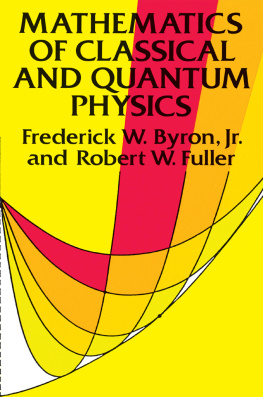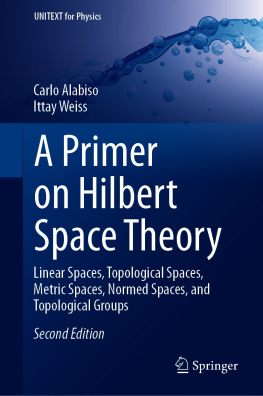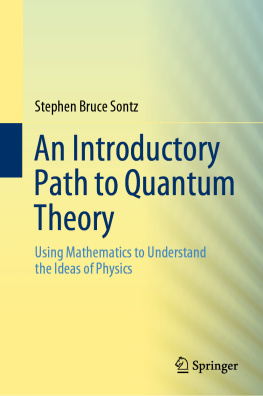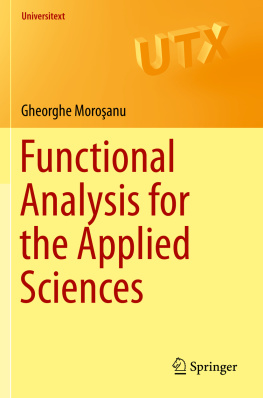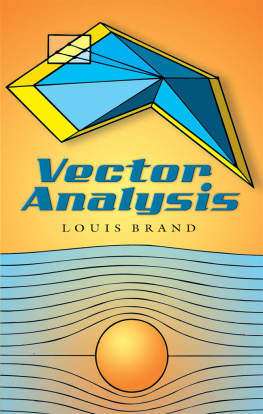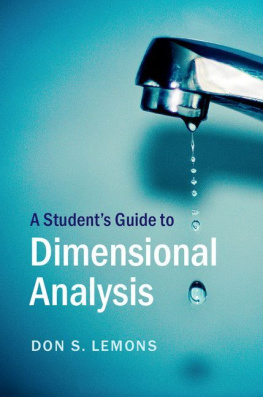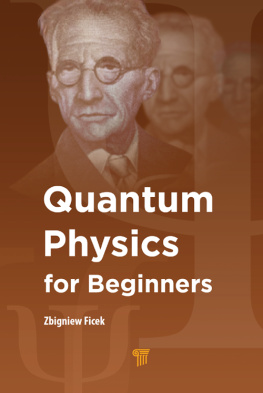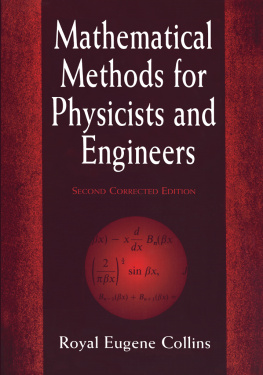Steven P. Starkovich
Department of Physics, Pacific Lutheran University, Tacoma, WA, USA
ISBN 978-3-030-73448-0 e-ISBN 978-3-030-73449-7
https://doi.org/10.1007/978-3-030-73449-7
Springer Nature Switzerland AG 2021
This work is subject to copyright. All rights are reserved by the Publisher, whether the whole or part of the material is concerned, specifically the rights of translation, reprinting, reuse of illustrations, recitation, broadcasting, reproduction on microfilms or in any other physical way, and transmission or information storage and retrieval, electronic adaptation, computer software, or by similar or dissimilar methodology now known or hereafter developed.
The use of general descriptive names, registered names, trademarks, service marks, etc. in this publication does not imply, even in the absence of a specific statement, that such names are exempt from the relevant protective laws and regulations and therefore free for general use.
The publisher, the authors and the editors are safe to assume that the advice and information in this book are believed to be true and accurate at the date of publication. Neither the publisher nor the authors or the editors give a warranty, expressed or implied, with respect to the material contained herein or for any errors or omissions that may have been made. The publisher remains neutral with regard to jurisdictional claims in published maps and institutional affiliations.
This Springer imprint is published by the registered company Springer Nature Switzerland AG
The registered company address is: Gewerbestrasse 11, 6330 Cham, Switzerland
Preface
This textbook serves as an introduction to groups, rings, fields, vector and tensor spaces, algebras, topological spaces, differentiable manifolds and Lie groupsmathematical structures which are foundational to modern theoretical physics. It is aimed primarily at undergraduate students in physics and mathematics with no previous background in these topics.
Although the traditional undergraduate course in mathematical methods for physicists is vitally important for a college-level education in physics (a course that is often taken by mathematics and engineering majors as well), too many undergraduate students see mathematical physics as a disconnected set of arbitrary methods, or a bag of manipulative tricks, rather than as being organized around these carefully crafted structures. The first goal of this book is to describe these structures.
Further, students who pursue advanced studiesparticularly in physicsare often confronted by a chasm between the methods they learned in school and the structures and methods they find in advanced texts and the professional literature. The second goal of this book is to help bridge that gap.
The motivation for this book is derived from many years of observation of this student experience and its consequences, and the earlier in the students education we can provide a sense of unity and context to their studies the better. Therefore, the books principal audience is the undergraduate student in physics or mathematics who is in their second or third year of study; students should not have to wait until they are in graduate school to gain this perspective.
The typical physics student is often dissuaded from pursuing courses in pure mathematics by the seeming lack of an immediate relevance of these courses to physics, and by their emphasis on formal proof. For these students, those doors and the opportunities that lie behind them remain closed.
Rather, what this student needs is a short introduction that articulates the essential concepts and vocabulary in a more expository but nonetheless rigorous fashion, and which does so with an eye on the physics. From atop this kind of middle ground a student would then have a secure vantage point from which to survey the possibilities that await. In that spirit, this book seeks to provide a path to that vantage point.
The book is organized around algebraic and topological concepts and structures, rather than methods of solution, and it makes connections to various elements of the undergraduate physics curriculuma feature that would be out of place in a more formal mathematics text. It is written for the reader who has no formal background in advanced algebra or topology, but those who complete it will be well prepared to delve more deeply into advanced texts and specialized monographs.
Consider a small sample of the things a student encounters in the typical physics curriculum: a multi-variable problem in vector analysis whose domain is three-dimensional Euclidean space; an energy-momentum conservation problem in special relativity whose domain is four-dimensional spacetime; the evaluation of a function in the complex plane via Cauchys integral formula; a classical mechanics problem that is framed in Hamiltonian phase space; or a Fourier transform of a time signal into an abstract function space (the frequency domain), and then (perhaps after some filtering or analysis) back again into the time domain.
In each of these examples, and the many others encountered over several years of college-level study, there is an underlying mathematical space (a structure) and a collection of tools (operations within a space or between spaces) that are used to define and solve a problem. In a most basic sense, however, there is only one fundamental structure, and there are only three fundamental operations involved; everything else is an elaboration or a specification.
The one fundamental structure is the set (or space, depending on context). With sets we have equivalence relations, quotient structures and product structures, which are then replicated across groups, rings, fields, modules, linear vector spaces, associative algebras, non-associative algebras and topological spaces.
The three fundamental operations are composition, taking a limit, and mapping. We can think of a compositiona binary operation where two things combine to yield a thirdin the context of algebraic structures. We can think of the process of taking a limitwhereby we assess the continuity of maps (functions) and spacesin fundamentally topological terms. The mapping concept transcends both algebra and topology, and is the connecting tissue of modern mathematics.
This text is organized accordingly, and consequently the sequence of topics will seem unusual to most physics students and instructors. For example, in a typical mathematical methods text vectors are presented early and groups usually much later. However, vector spaces are rather elaborate algebraic structures compared to groups, so here groups are discussed first. Another consequence is that a single topic may appear in different chapters as different structural aspects are highlighted (e.g., groups generally in Chap. ). At other times we show a fundamental idea (e.g., a map) in different settings.
Chapter is an introduction to sets, relations and mappings and is essential for all that follows. If there is one overriding objective of this chapter, it is to frame the readers thinking about functions as being maps between sets rather than formulas. Also, although product sets may be familiar to the student, the material here on quotient sets will likely be new.

